General election 2019: preview of the East Midlands
In the run-up to the 2019 general election, on Thursday, 12 December, the Democratic Audit team will be previewing the key contests, and political divides in each of the UK’s regions. The East Midlands is a crucial region in the contest between Labour and Conservatives, home to high-profile marginals in successive elections, and with a generally Leave-leaning electorate that the Conservatives are targeting. In this preview we focus on the marginal seats based on 2017’s results, the latest polling, and how the Leave-Remain dynamic changes the established electoral contests.
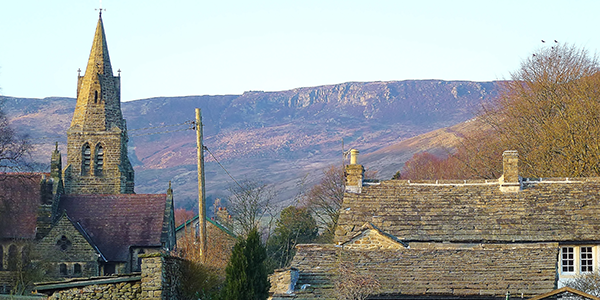
Edale (High Peak). Picture: Alison Benbow/(CC BY 2.0) licence
The Midlands as a whole has been instrumental in Conservative revivals: it switched from majority Labour to majority Conservative 2010, an election when Labour lost 11 seats here. Since then seat numbers have remained fairly even (see Figure 1), with the central seats of Leicester and Nottingham safest for Labour, while a cluster of seats Labour lost in 2010 are now solid Conservative. In 2017 five seats changed hands, with three switching from Conservatives to Labour (Derby North, High Peak and Lincoln) and two (Mansfield and North East Derbyshire) going blue. These seats, in particular the three Labour gains, which the Conservatives are targeting, are important seats electorally this time around.
Map showing the 2017 general election results in the East Midlands
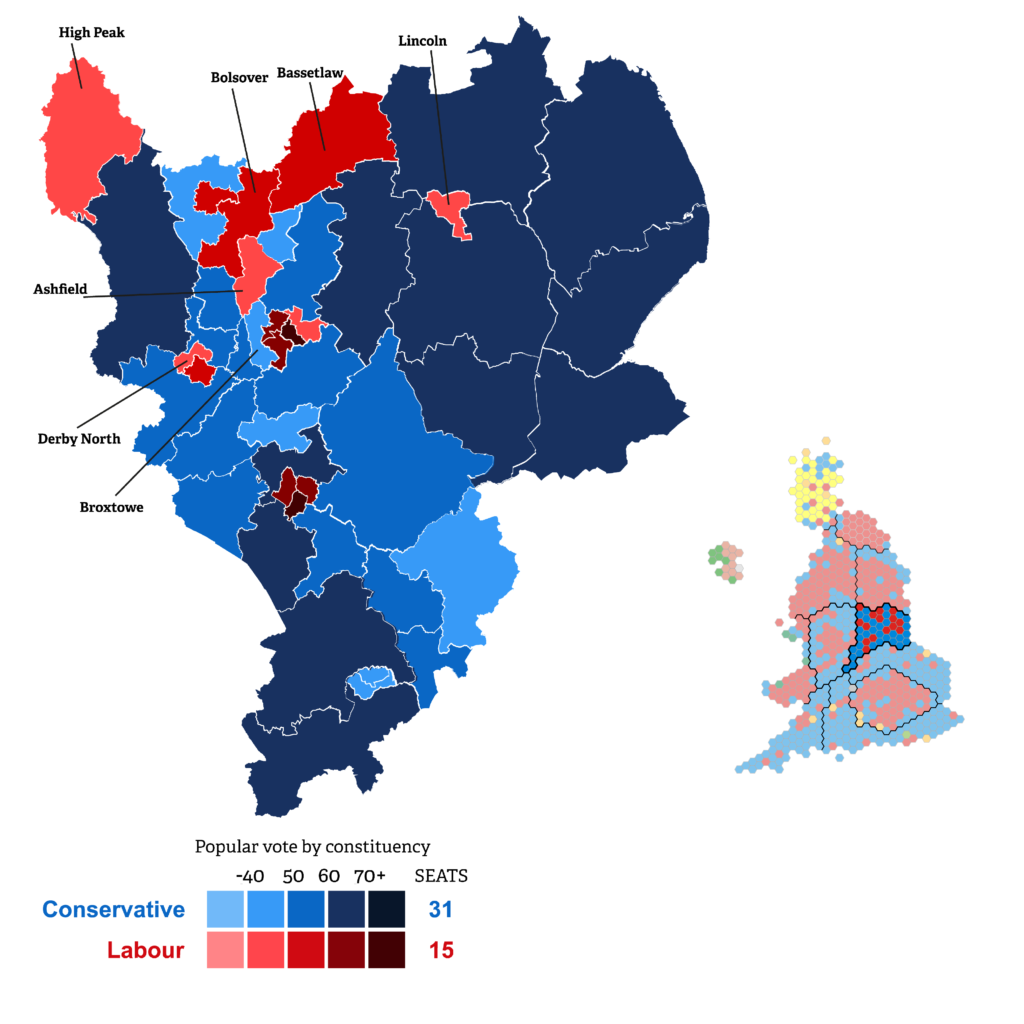
Source: Adapted from map by DrRandomFactor & Ch1902 /Wikipedia. Key constituency contests for 2019 labelled.
For all seats in the region, you can find full details of the candidates standing in 2019 and their social media links (so you can see what kind of a person they are and what issues they focus on) at DemocraticDashboard.com. It also gives complete results from the 2017 general election in each area, estimated 2016 EU referendum results and details about the constituency so you can best make up your own mind how to vote.
The estimated constituency results for all seats in the East Midlands in 2019, and regional vote shares given in figures 1 and 2, come from YouGov’s large MRP poll published on 27 November and are the best available at time of writing. A sample of 100,319 people was polled across the UK, and used, along with demographic and other data, to create estimates for each constituency.
Figure 1: Number of seats won by each party at the last three general elections in the East Midlands, and latest estimates from YouGov polling (27 November)
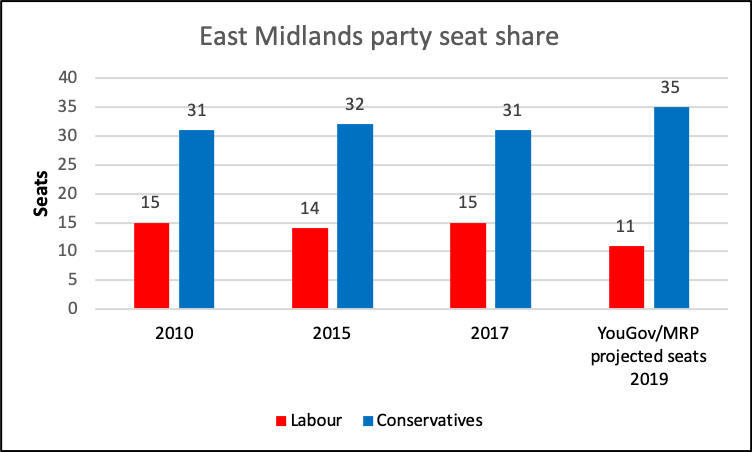
2019 figures from YouGov MRP seat estimates, 27 November
Figure 2: Parties’ shares of the votes in the East Midlands at the last three general elections, and estimated shares in 2019 polling by YouGov (27 November)
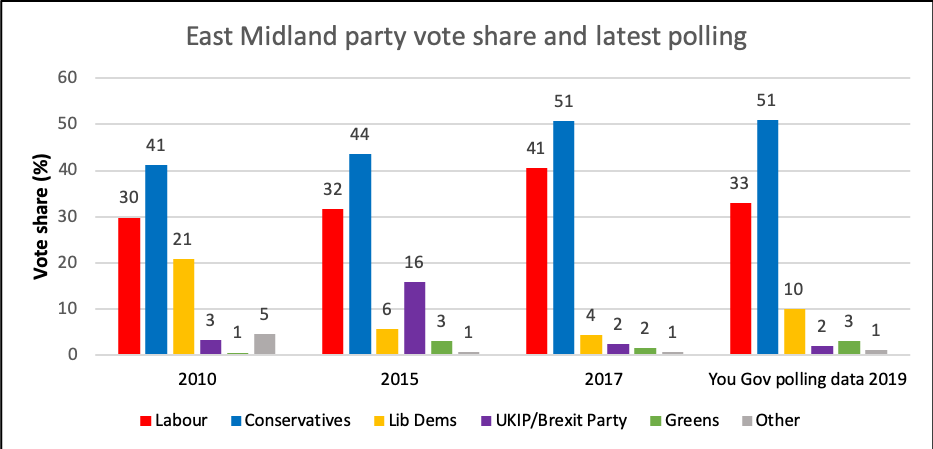
2019 data from Benjamin Lauderdale and Jack Blumenau for YouGov, 27 Nov
Labour seats the Conservatives are targeting
The East Midlands boasts a series of fascinating seats to keep an eye on. According to YouGov’s MRP estimates discussed above, there are four current Labour seats that are forecast to switch to the Conservatives in the East Midlands: Ashfield, Bassetlaw, Bolsover, and Derby North.
A core theme of this election is the Conservative aim to secure a majority by capturing Leave-voting Labour seats in regions such as the East Midlands. And in many ways, Ashfield typifies this battleground. The East Midlands constituency has been Labour-held since its creation in 1955 (except for in 1977 when the Conservatives captured the seat in a by-election). It also has a large Leave vote – 70.5% of voters here cast their ballots for Brexit in 2016 according to Chris Hanretty’s estimates. So far, so typical of the kinds of seats that are crucial in this election.
But Ashfield also has a fascinating background of local personalities and rivalries. The former Labour MP Gloria De Piero has stepped down, and has been replaced by Labour with local woman Natalie Fleet, who faces a serious fight to keep hold of the seat, since the seat is a top target for the Conservatives. On the regional polling numbers the Conservatives would be comfortably ahead.
Her Conservative opponent Lee Anderson used to work for the former Labour MP, De Piero. Last year, Anderson defected to the Conservatives, but has since been in the news for his comments on ‘nuisance’ council tenants (whom he said should be made to live in tents), and for staging a supposedly ‘impromptu’ doorstep canvassing interaction for the political reporter Michael Crick (in fact, the unsuspecting member of the public was a friend of his).
Fleet also faces fierce competition from the leader of the Ashfield Independents, Jason Zadrozny. Zadrozny stood as the Liberal Democrat candidate in 2015, but dropped out after accusations surfaced of child abuse. The charges were dropped on the morning of his trial due to lack of evidence. Zadrozny has since enjoyed huge success locally – his Independents group won 30 of the 35 seats on Ashfield District Council this year. In 2017, the Ashfield Independents’ candidate came third with 9.2% of the vote, and although Zadrozny is unlikely to win, his presence here makes the outcome less certain. He is billing himself as ‘the only Leave candidate who can beat Labour’ in Ashfield. The Brexit Party MEP Michael Daubney is also standing.
In neighbouring Bolsover, Labour veteran Dennis Skinner, who has been MP for the constituency since 1970, also faces a fight to keep hold of his seat. In line with voters in his constituency – 70% of whom back ‘Leave’ in 2016 – the ‘Beast of Bolsover’ is also a Brexiteer. His majority over the Conservatives fell in 2017 to 11%, however, and YouGov’s MRP model estimated that local Tory candidate Mark Fletcher is on course to capture the seat this time.
YouGov also estimate Labour to be behind the Conservatives in Bassetlaw where Labour MP and Corbyn-sceptic John Mann is standing down, and in Derby North – where former Labour MP Chris Williamson, who was suspended from the party for anti-semitism, is standing as an Independent. Meanwhile, High Peak is estimated to be a statistical dead heat, which YouGov puts as Labour, with the polling forecast suggesting 42% a piece for Labour and Conservatives.
If Labour were to slip any further in the national or regional polls, then perhaps Gedling and Lincoln would be at risk, though on current polling projections they stay narrowly Labour.
Seats the Conservatives are defending
In marginal Broxtowe former Conservative MP Anna Soubry is standing under the banner Independent Group for Change (formerly Change UK). There is no Brexit Party candidate standing. But there is a fairly high-profile independent Brexit candidate Teck Khong, who some independent Brexit groups are supporting, given that the Conservative candidate here, Darren Henry, voted Remain. On the Remain side, the Lib Dems have stood down in favour of Soubry, but tactical voting sites are quite split between supporting Soubry to reward her continued campaigning for the Remain cause, or giving a more ‘unsentimental’ support for Labour, on the grounds this seat is a marginal that they could well pick up.
The Liberal Democrats are largely out of the running in this region, since they hold no seats currently, and nor are they in a viable position to challenge for any of the Labour- or Tory-held constituencies. Their regional polling level is also well below the party’s national average.
Figure 3: The East Midlands’ most marginal seats (by % vote) from the 2017 election
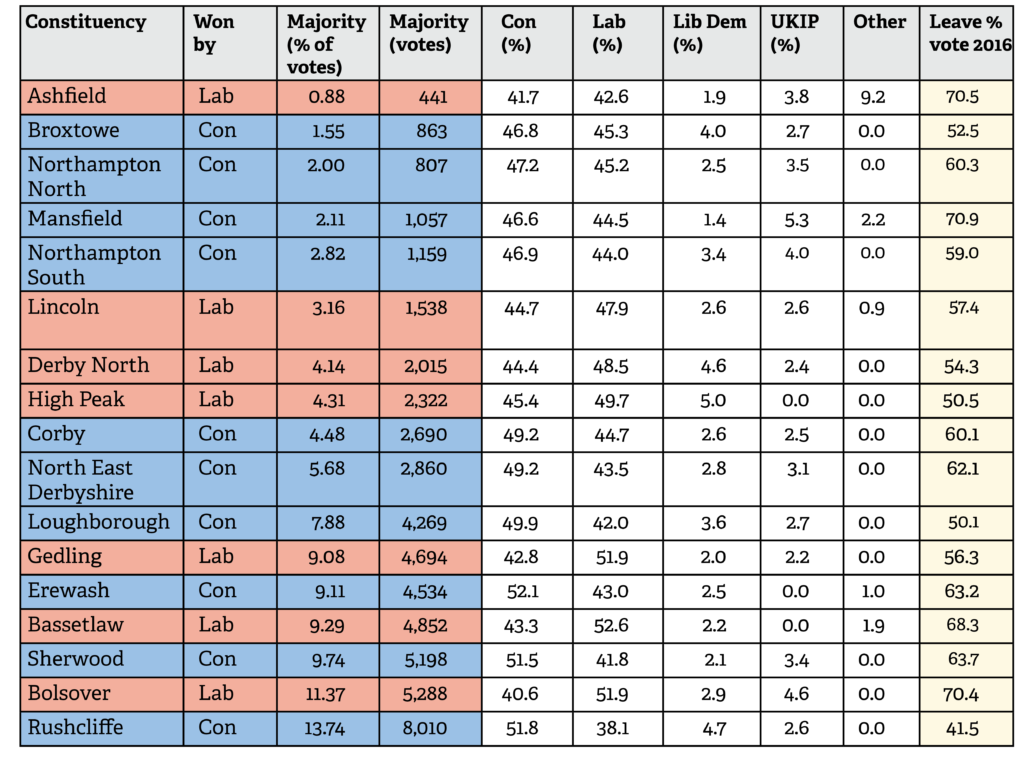
Note: The Leave % for each the 2016 Brexit referendum by constituency (and mentioned throughout this article), are Chris Hanretty’s estimates. You can also find these for each constituency (including those we don’t discuss), along with general election results at DemocraticDashboard.com.





 Democratic Audit's core funding is provided by the Joseph Rowntree Charitable Trust. Additional funding is provided by the London School of Economics.
Democratic Audit's core funding is provided by the Joseph Rowntree Charitable Trust. Additional funding is provided by the London School of Economics.